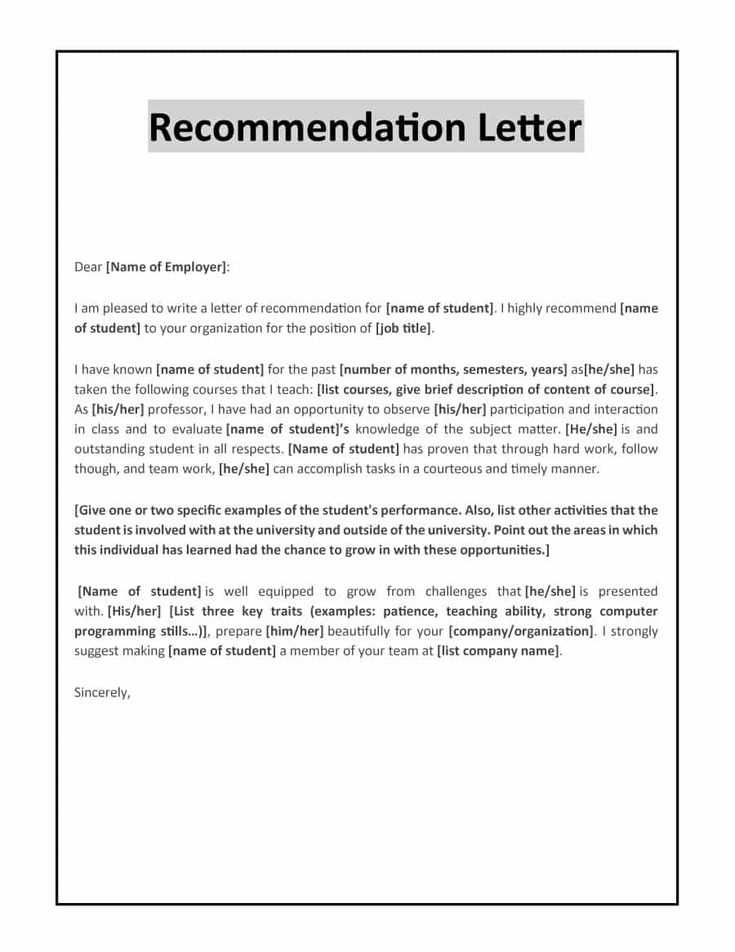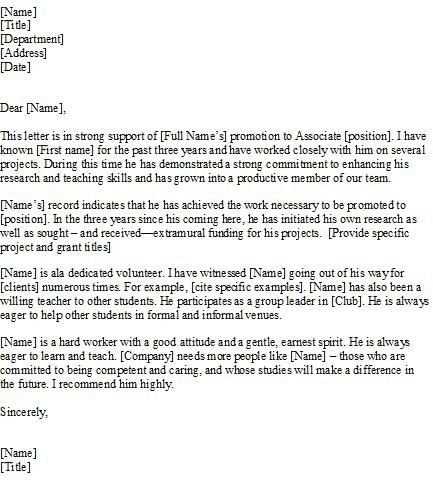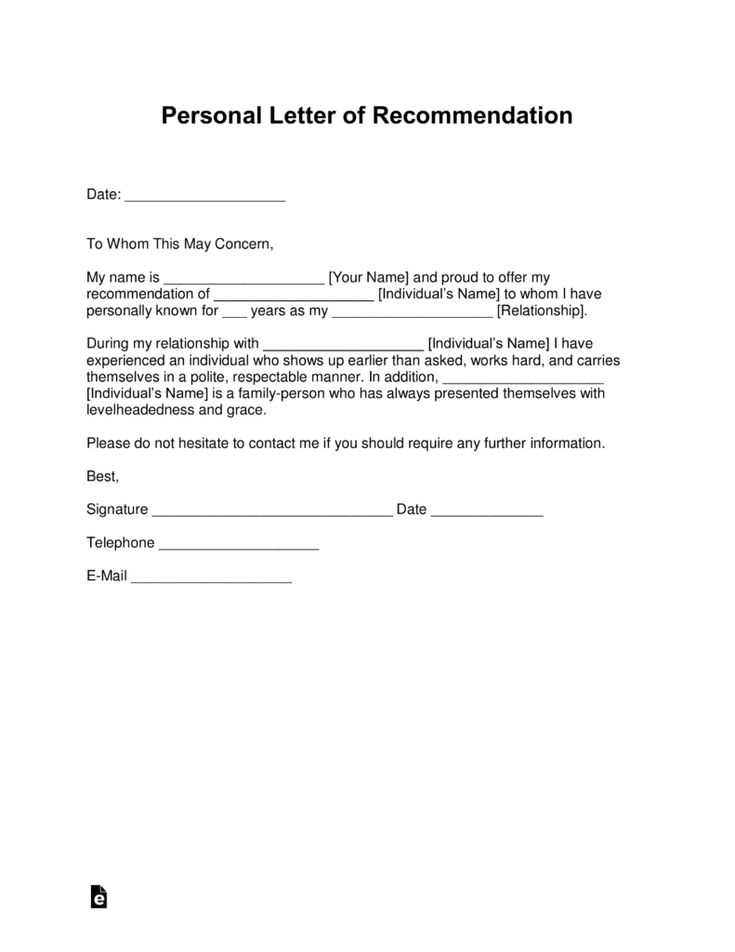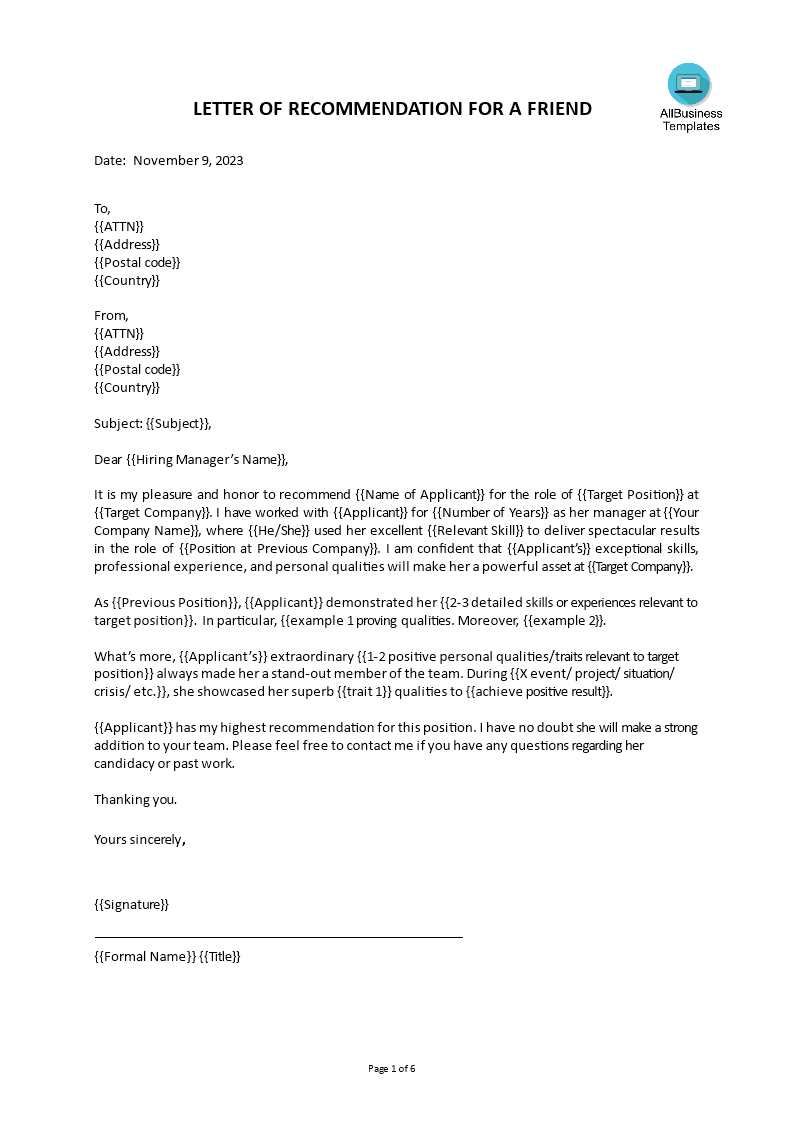Recommendation Letter Format Template Guide

When recommending someone for a position or opportunity, it’s essential to craft a well-structured document that highlights their strengths, skills, and qualifications. This type of writing serves as a powerful endorsement, helping others understand why the individual stands out. The approach to crafting such a document should be clear, concise, and tailored to the specific context.
Choosing the right tone plays a critical role in ensuring the message is both professional and personal. It is important to balance enthusiasm with objectivity, showcasing the candidate’s potential while maintaining credibility. The layout and structure should guide the reader smoothly through the key points without overwhelming them with unnecessary details.
For a truly impactful endorsement, careful attention should be paid to the details. By understanding the core components and the best way to present them, you can create a document that leaves a lasting impression and effectively conveys the person’s qualifications.
Understanding the Purpose of a Reference Document
Creating a well-crafted endorsement serves as a valuable tool in vouching for someone’s qualifications and abilities. It plays a pivotal role in showcasing an individual’s strengths, potential, and character to the intended audience. This kind of writing helps establish trust and credibility, giving others a comprehensive understanding of the person being recommended.
The main objective of this endorsement is to provide a thorough and honest account of why the individual is deserving of a particular opportunity or position. It allows the writer to highlight the candidate’s:
- Skills and expertise that set them apart
- Character traits that contribute to their success
- Achievements and notable accomplishments
Ultimately, it helps to build a case for the individual, offering a compelling reason for others to consider them. The format and structure of such a document should guide the reader in a logical flow, making it easy to grasp the candidate’s qualifications quickly and clearly.
Essential Elements to Include in a Template
When crafting an effective document to support someone’s candidacy, there are key components that should always be included to ensure the message is clear and persuasive. These essential parts form the foundation of any endorsement and help convey the necessary information in an organized manner.
First, it is important to introduce the individual being recommended and establish the context in which the writer knows them. Providing relevant background helps set the stage for the endorsement and makes the reader aware of the relationship between the writer and the candidate.
Next, a description of the person’s abilities and skills is crucial. This section should highlight the qualities that make them an excellent fit for the opportunity. It should be specific and backed by concrete examples whenever possible to reinforce the message.
Finally, the conclusion should reiterate the strong points and formally express support for the candidate. This section also allows the writer to offer a personal note of encouragement, urging the reader to take the individual into serious consideration.
Choosing the Right Tone and Language

When creating a supportive document, the tone and language used are crucial in ensuring the message is received as both professional and personal. The way the information is presented can influence how the reader perceives the individual being discussed. A balance must be struck between warmth and professionalism, creating a positive but credible impression.
Key Considerations for Tone
- Enthusiasm: Convey a sense of genuine belief in the individual’s abilities without sounding overly casual or exaggerated.
- Clarity: Ensure the language is straightforward and easy to understand, avoiding jargon or complex phrasing that may confuse the reader.
- Formality: The tone should be respectful and polished, maintaining a level of professionalism appropriate for the context.
Language Tips for Effectiveness

- Use active voice: Active voice makes the language more direct and engaging.
- Be specific: Providing concrete examples strengthens the message and makes it more compelling.
- Avoid negative language: Focus on the positive attributes and potential of the individual being endorsed.
By carefully selecting the right tone and language, the document will not only reflect the candidate’s qualifications but also make a lasting, positive impression on the reader.
Common Mistakes to Avoid in Letters
When creating a document to support someone, it’s important to avoid common pitfalls that can undermine the impact of your message. Certain errors, if left uncorrected, can weaken the endorsement and potentially harm the candidate’s chances. Paying attention to the following mistakes can help ensure the document remains effective and professional.
- Vague or general statements: Being too broad or unclear about the person’s skills or accomplishments fails to convey their true value. Always provide specific examples to back up your claims.
- Exaggeration: Overstating the candidate’s abilities can make the document appear insincere. Focus on truthful and well-supported descriptions that reflect the person’s strengths.
- Neglecting structure: A disorganized or poorly structured document can confuse the reader. Ensure the content flows logically and is easy to follow.
- Overly informal language: While a friendly tone is important, using too casual or colloquial language can diminish the professionalism of the document.
- Ignoring grammar and spelling: Mistakes in grammar or spelling can distract from the content and give a negative impression. Always proofread before finalizing.
Avoiding these common mistakes will help you craft a strong and credible endorsement, ensuring that your message is received in the best possible light.
How to Personalize a Reference Document
Making a supportive document stand out requires more than just a generic endorsement. To create a meaningful and effective piece, it’s essential to personalize it, tailoring the message to reflect the unique qualities and circumstances of the individual being endorsed. This helps create a genuine and compelling case for the person, making it more likely to resonate with the reader.
Steps to Personalization

- Focus on individual achievements: Highlight specific accomplishments and qualities that directly relate to the opportunity the person is seeking.
- Use personal anecdotes: Sharing unique experiences or interactions with the individual can add authenticity and depth to the endorsement.
- Address the recipient: If possible, tailor the content to the organization or person who will be reviewing the document. Mention how the candidate aligns with their needs or values.
Customizing Key Sections
| Section | Personalization Tip |
|---|---|
| Introduction | Provide context by describing your relationship with the individual and how you came to know their abilities. |
| Skills and Qualities | Focus on traits that are specifically relevant to the role or opportunity they are pursuing. |
| Conclusion | Reaffirm your support and emphasize why the individual is well-suited for the opportunity. |
By carefully tailoring the content, you ensure that the endorsement is not only sincere but also highly relevant, increasing its chances of making a lasting impact.
Formatting Tips for a Professional Appearance
How a document is presented can significantly impact its effectiveness and how it is perceived. A clean, organized, and polished layout is essential for ensuring the content is taken seriously and the message is conveyed clearly. Proper formatting not only enhances readability but also reflects professionalism and attention to detail.
- Consistent margins and spacing: Ensure that margins are even on all sides and there is appropriate spacing between sections. This creates a balanced and easy-to-read layout.
- Clear, readable fonts: Choose a professional font such as Arial or Times New Roman, with a readable size (typically 10-12 points). Avoid using overly stylized fonts.
- Proper use of headings and subheadings: Break the content into sections using clear headings to guide the reader through the document. This helps the reader easily navigate the key points.
- Avoid clutter: Keep the document clean and simple, avoiding unnecessary decorations or excessive use of bold and italics. Focus on the content itself.
- Alignment: Align the text to the left, ensuring a neat and uniform appearance. Avoid using center alignment for body text, as it can make the content harder to read.
By following these formatting guidelines, you ensure the document is not only professional but also engaging and easy to read, leaving a positive impression on the recipient.